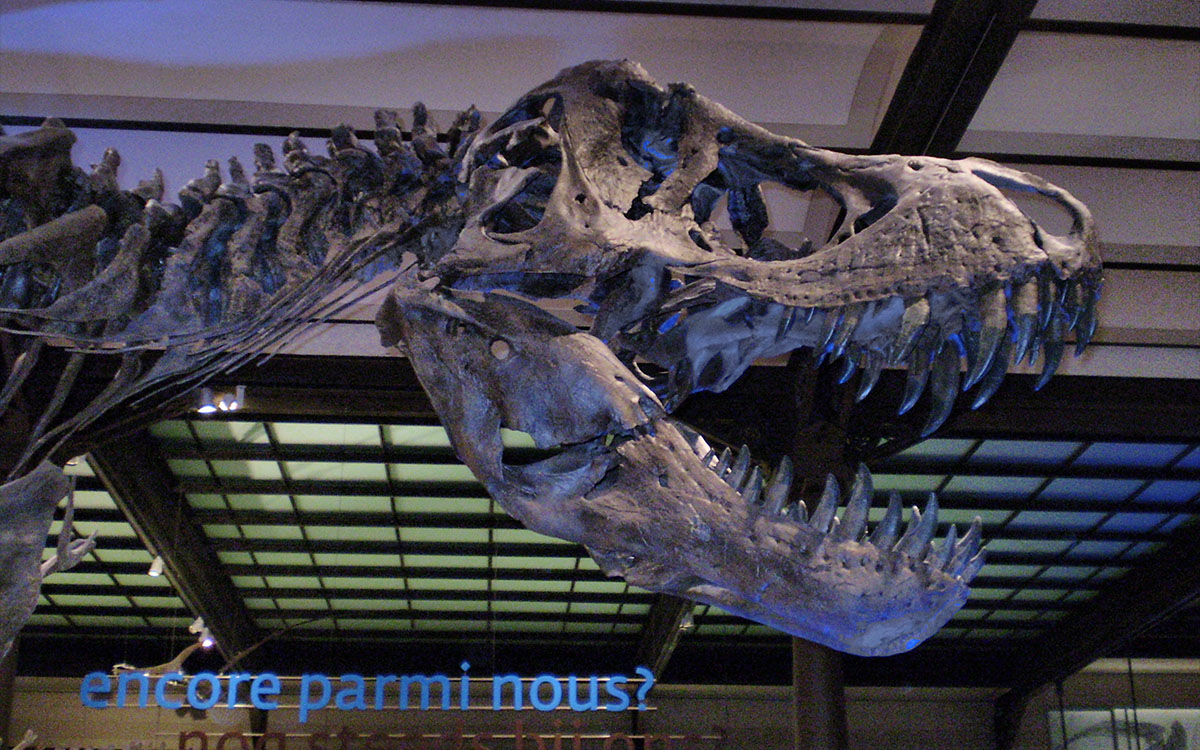the t-rex was a predator and we have proof

Last time we tackled the question of whether the mighty T-Rex was a predator or a scavenger, the math seemed to point to a mix at the very least. There was no way a creature that large had enough to eat just by moving from carcass to carcass and picking off the scraps left by the apex predators of its day if we take into account the average distances between the kills, decay, and the need to compete with smaller, faster scavengers. But on the other hand, there was the issue of not finding any clear signs of T-Rex predation. Sure there have been some teeth marks on a couple of fossilized bones but all of them could be equally explained by both scavenging and by hunting, with a few specimens having teeth marks in such awkward places that they were hard to explain in the first place. Now, however, there’s proof that the Tyrant Lizard King was indeed the fierce predator we always imagined. One of its fangs was found buried in the hip bone of a duck bill dinosaur, exactly where one would expect a predator to bite to take out the hind legs of a prey animal, and it shows signs of infection and two months of healing after the attack.
Well that’s pretty definitive then. The fossil record has given us a little forensic puzzle that points to a moment in time when a T-Rex tried to chase down a duck bill and the herbivore escaped to live for another two months or so with a terrifying souvenir in its body. Alternatively, we can try and imagine other scenarios during which the T-Rex didn’t have to chase it down. Maybe it was sleeping and attacked by surprise. Maybe it fell and managed to defend itself from a huge beast that came to gnaw on it. But either way, we have pretty clear signs of predation that can put the debate to rest. Now, of course T-Rex would’ve also scavenged because all predators do it as an occasional supplement to their diet. If someone else already took the risk and did the work that goes into a big kill and can be scared off, why not simply take the carcass like lions and hyenas often do from each other? But with predation now verified, little kids can keep on safely thinking of these enormous creatures as intimidating hunters stalking the plains, looking for a chance to strike quickly and violently with enough force to chew through a car…
And of course there’s another interesting fact that this debate about the nature of T-Rex’s diet and predatory habits reveals about science. Because there are always questions to answer in the process of learning more about our past, scientists really are comfortable going after even the most sacred cows. Since the first fossil of this creature was discovered and erected into the towering, fierce stance that was its trademark for almost a century afterwards, paleontologists have been figuring out how it really looked, how it really stood, and how it really moved, which raised questions about what and how it really ate. In the process they lowered its body, raised the giant, muscular tail, leveled its enormous head to its now horizontal spine, and found out it moved faster that first thought, as did its prey. Now we know it really was the terrifying beast we always thought it was, but we know this based on concrete, well, fossilized evidence, not just the popular imagination of what it might have done with its banana-sized chompers. And that’s the beauty of science. It gives us the tools not just to imagine, but to really know.





